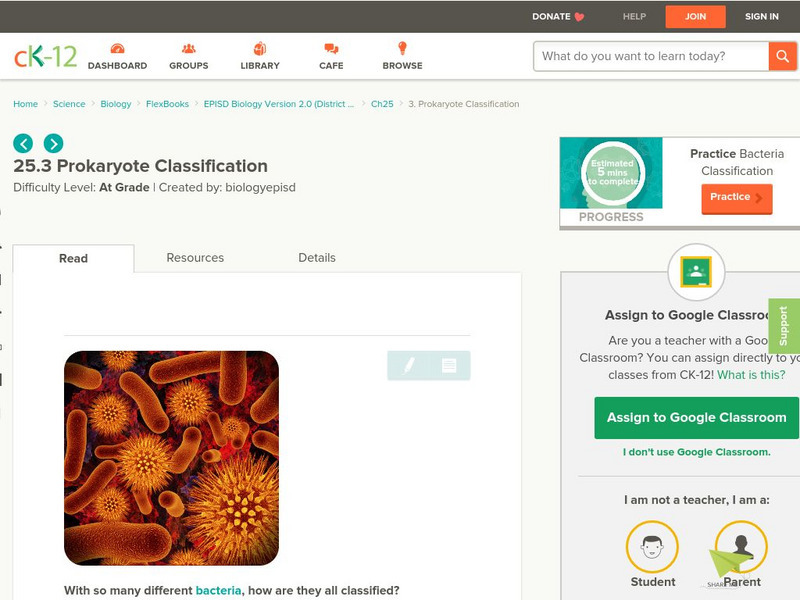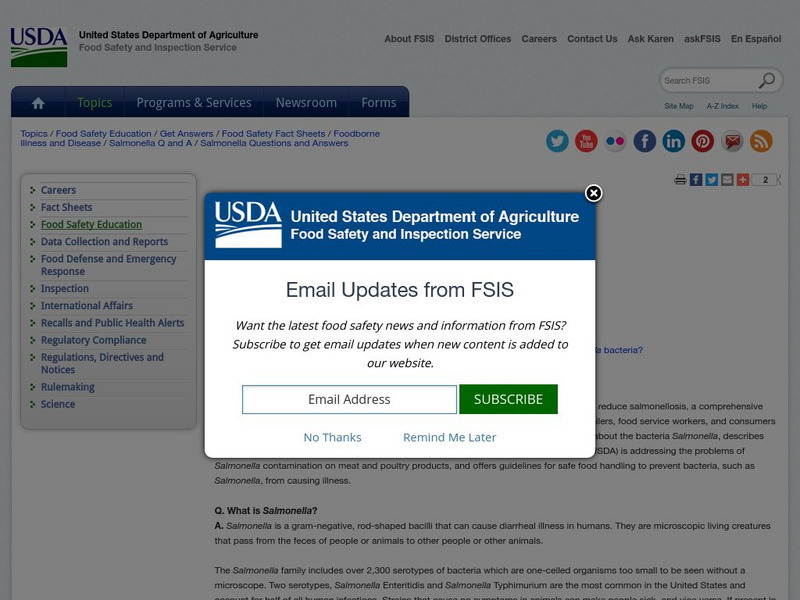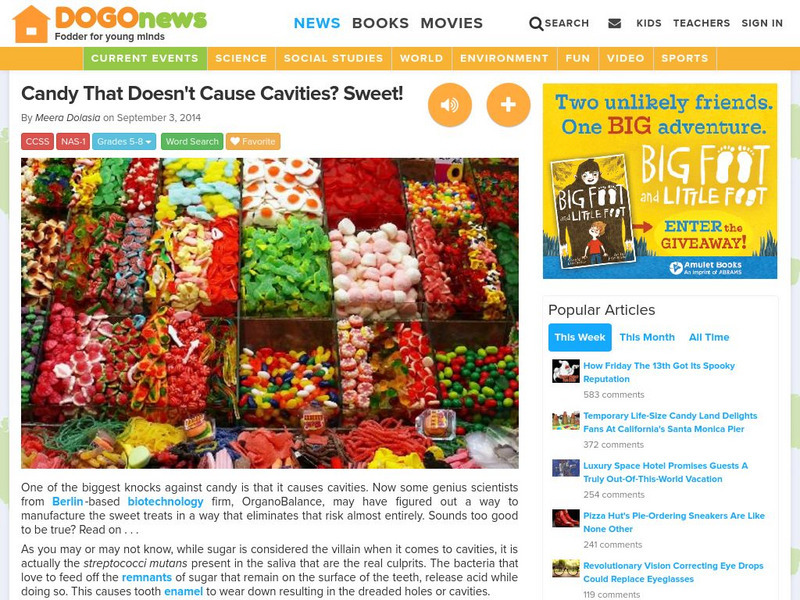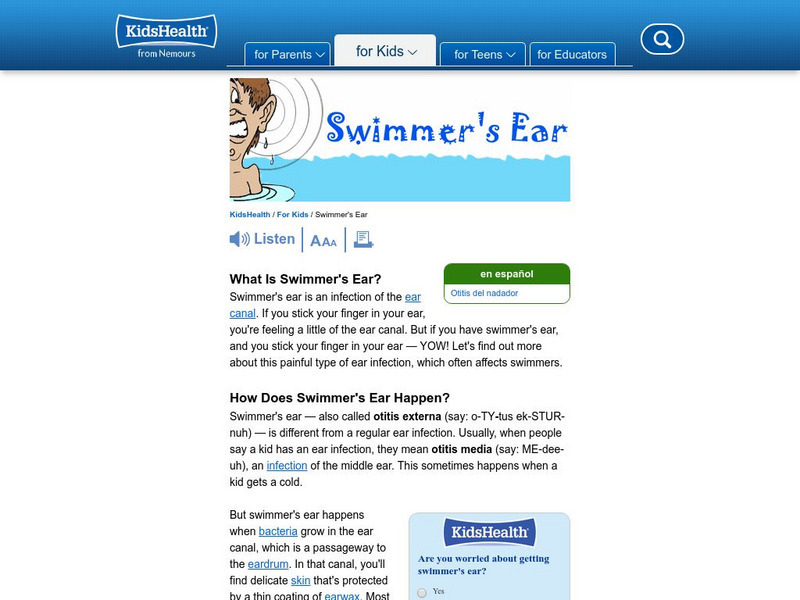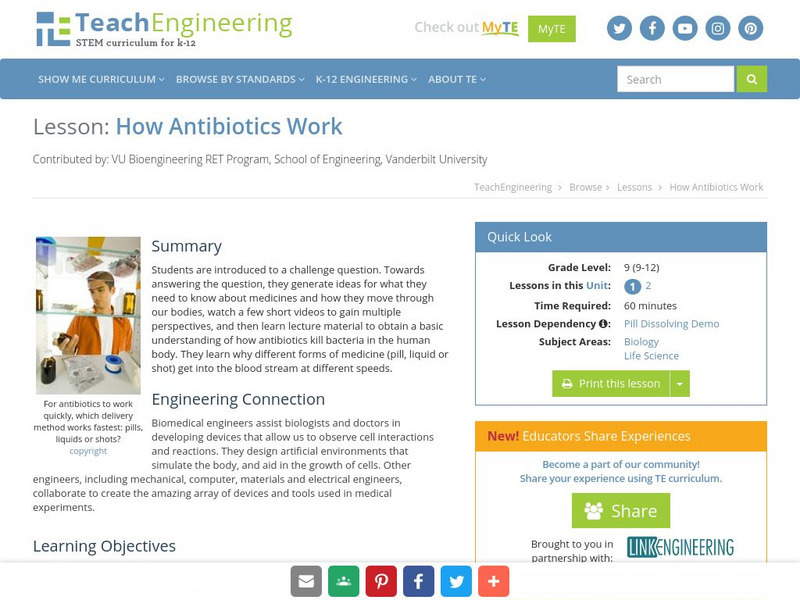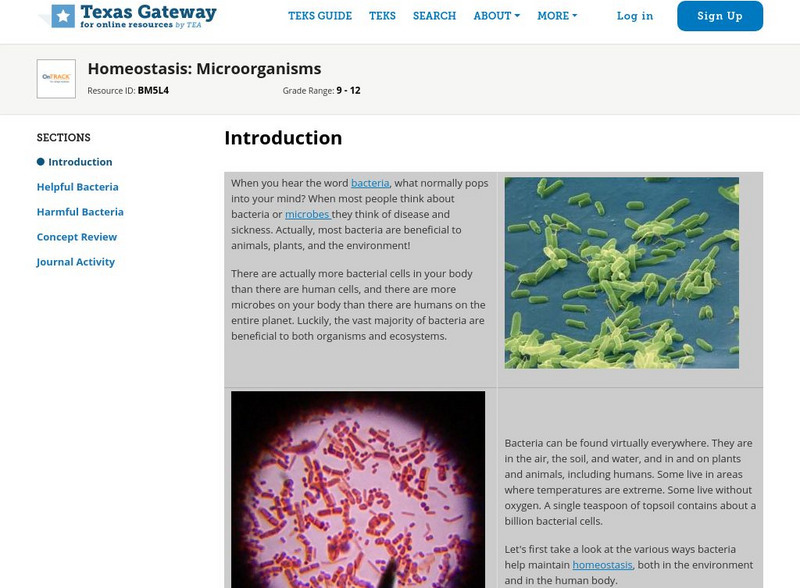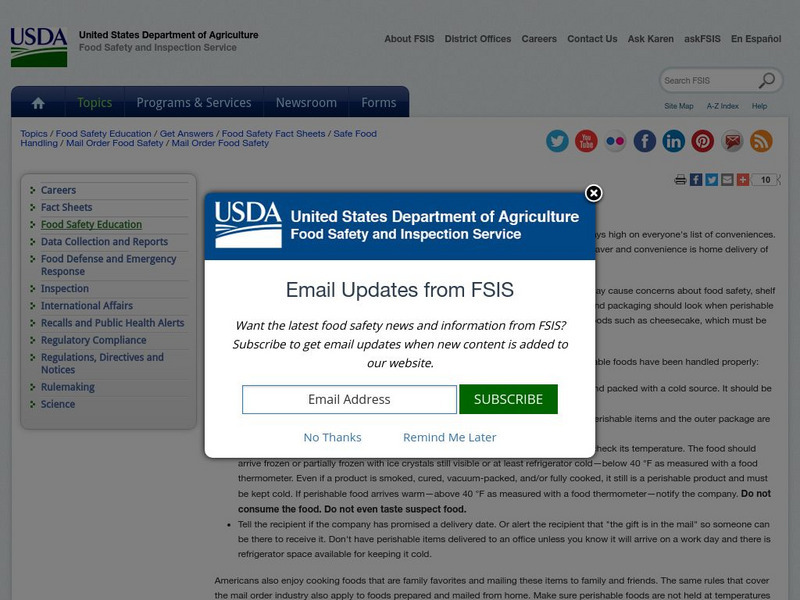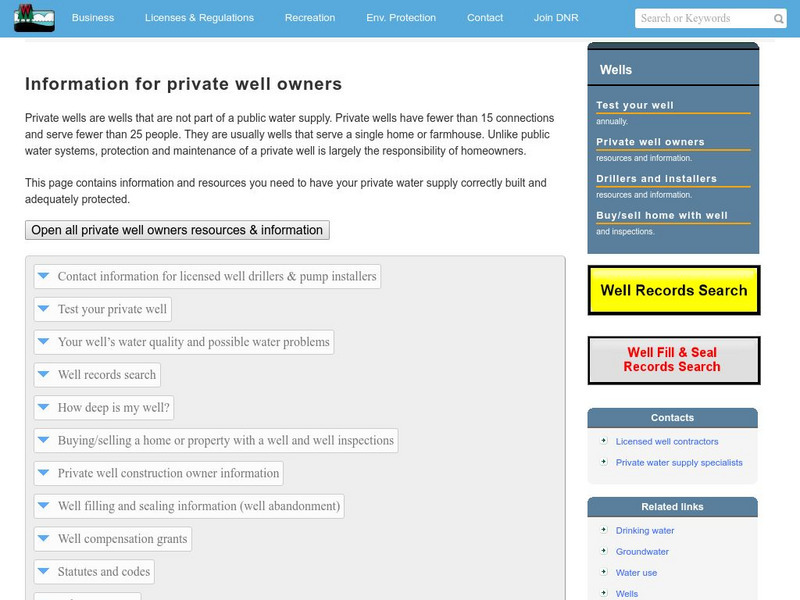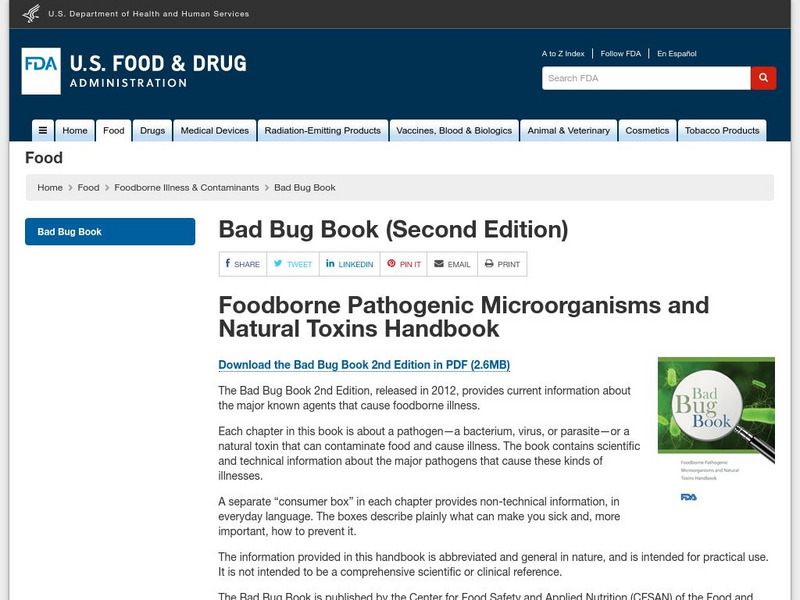CK-12 Foundation
Ck 12: Episd: Prokaryote Classification
[Free Registration/Login may be required to access all resource tools.] Students will understand where bacteria live, the different types of prokaryotes, and extremephilic bacteria.
Smithsonian Institution
Tween Tribune: If We Don't Need an Appendix, Why Is It There?
Article presents a theory regarding the role of the appendix in the human body.
US Department of Agriculture
Food Safety & Inspection Service: Salmonella
Answers to many questions about the salmonella bacteria and its reputation as the #1 reported cause of foodborne illness.
DOGO Media
Dogo News: Week of 9 8 14: Candy That Doesn't Cause Cavities
Learn how bacteria could be utilized to make candy that doesn't cause cavities.
Other
Virginia Department of Agriculture & Consumer Services: Food Safety
A comprehensive food safety site including information on food poisoning, food safety tips, a food safety quiz and a site for educating children on food safety.
Khan Academy
Khan Academy: Cell Cell Signaling in Unicellular Organisms
Article takes a look at how unicellular organisms "chat" with one another using chemical signals. It examines yeast mating types, bacterial quorum sensing, and biofilms.
Khan Academy
Khan Academy: Bacteriophages
Learn about bacteria-infecting viruses, including the lytic and lysogenic cycles.
Curated OER
Kids Health: Swimmer's Ear
Swimmer's Ear is an infection in the outer ear canal. Read about how this infection comes about, how to treat it, and what to expect when you have Swimmer's Ear.
TeachEngineering
Teach Engineering: Sugar Spill!
In this activity, students act as environmental engineers involved with the clean up of a toxic spill. Using bioremediation as the process, students select which bacteria they will use to eat up the pollutant spilled. Students learn how...
TeachEngineering
Teach Engineering: Would You Drink That?
This activity focuses on getting students to think about bacteria, water quality and water treatment processes. Students develop and test their hypotheses about the "cleanliness" of three water samples prepared by the teacher. Then they...
TeachEngineering
Teach Engineering: Dirty Decomposers
Students design and conduct experiments to determine what environmental factors favor decomposition by soil microbes. They use chunks of carrots for the materials to be decomposed, and their experiments are carried out in plastic bags...
TeachEngineering
Teach Engineering: How Antibiotics Work
Young scholars are introduced to a challenge question. Towards answering the question, they generate ideas for what they need to know about medicines and how they move through our bodies, watch a few short videos to gain multiple...
Texas Education Agency
Texas Gateway: Homeostasis: Microorganisms
Given scenarios, illustrations, or descriptions, the student will identify the roles of microorganisms in the health of organisms and ecosystems.
Other
Shigella: About
Very informative site! Includes a history of the bacteria shigella and how it was discovered. Also, symptoms, risks, detection, treatment, causes and information about recent outbreaks.
US Department of Agriculture
Fsis: Mail Order Food Safety
This resource focuses on information about sending perishable food by mail. It includes links to articles about related topics, and a step-by-step guide on how to ordering a mail-order food gift.
Centers for Disease Control and Prevention
Centers for Disease Control: Listeria
Answers to the most frequently asked questions on Listeriosis - symptoms, causes, targets, treatment and more. Includes technical and general terms.
Wisconsin Department of Natural Resources
Wdnr: Information for Homeowners With Private Wells
Provides information about water quality, contamination in private wells, well construction and pump installation for private wells, a list of laboratories certified to test for bacteria and other contaminants, recommendations for...
BBC
Bbc: Week of 12 16 13: Us Health Watchdog Cracks Down on Antibacterial Soaps
Learn why there is a new health warning from the FDA against the use of antibacterial soaps.
PBS
Pbs Learning Media: Decomposers
Without the work of decomposers, living organisms would eventually use up all the raw materials in the environment, and dead organisms and wastes would pile up. This video segment from Interactive NOVA: "Earth" describes the role of...
Howard Hughes Medical Institute
Hhmi: Bio Interactive: Bacterial Id Virtual Lab App
This app will help students "learn about the science and techniques used to identify different types of bacteria based on their DNA sequences".
US Food and Drug Administration
Fda: Bad Bug Book
Downloadable listing of bacterial foodborne illnesses, including clostridium perfringens. Worded so kids can understand it and includes pictures.
E-learning for Kids
E Learning for Kids: Science: Underwater City: What Are Bacteria?
Jack discovers that bacteria are rotting the ship away at the bottom of the ocean. What are these tiny creatures? Join Jack and find out.
University of California
Ucmp: Introduction to Slime Molds
This University of California Berkeley site offers a definition of slime molds, structure, and life cycle.
Sumanas
Sumanas Inc: Microbial Life: The Winogradsky Column
Nice animation of how to create a Winogradsky column using bacteria from pond mud. Learn how "mud can be mixed with several ingredients to provide food and other substrates for the bacteria to use" to survive.


